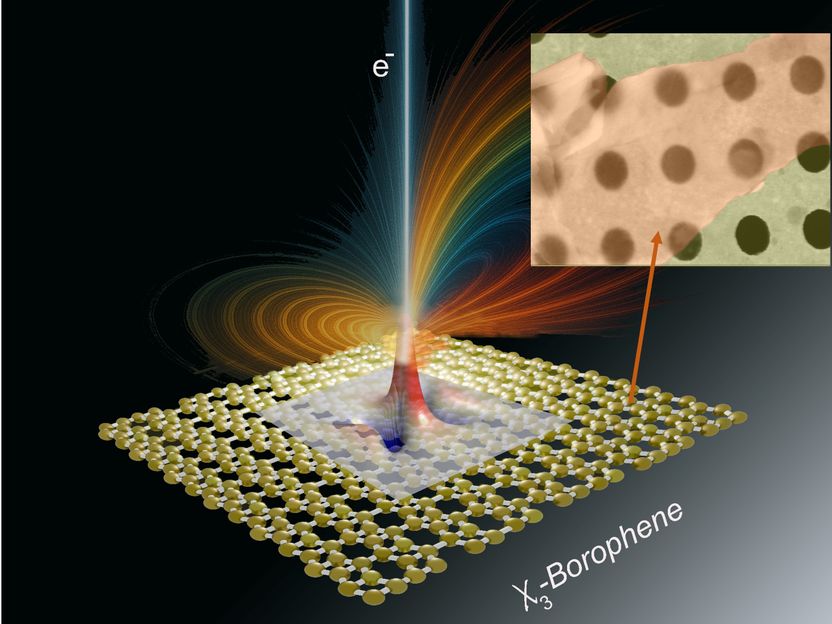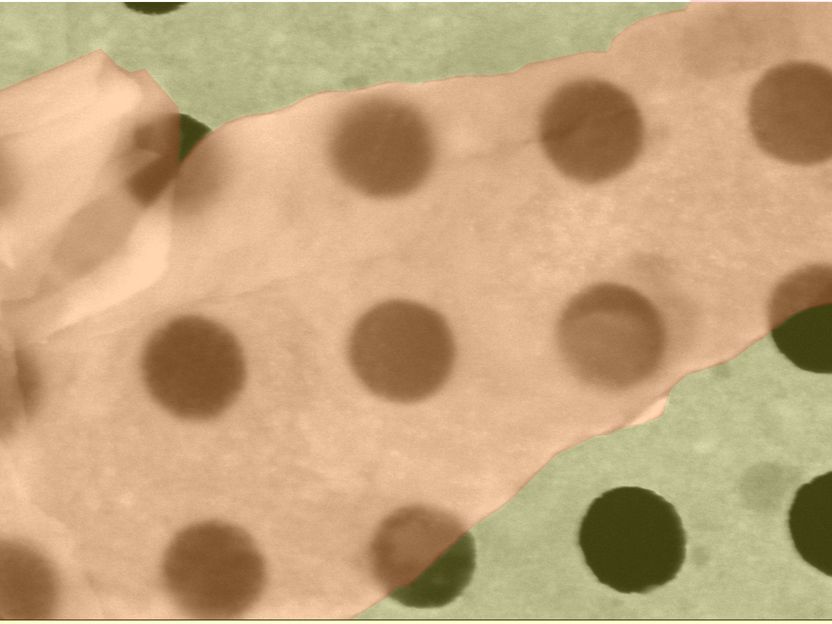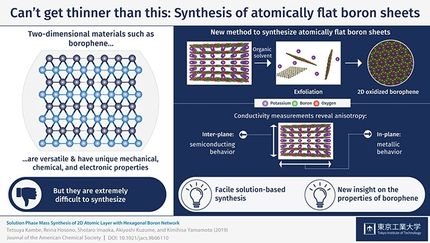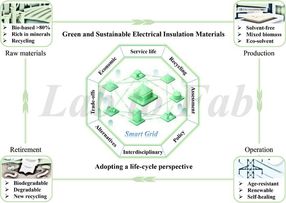Borophene directs light on a nanoscale
Kiel research team observes special light propagation in atom-thin metal for the first time - with potential for compact optical components
Advertisement
Electron microscopes are investigating it today, tomorrow it could be part of microscopes themselves: a metal consisting of just one atomic layer directs light across its surface and focuses it in a very small space - even at visible wavelengths. A team from Kiel University (CAU) has demonstrated the effect for the first time in borophene.

The optical response of a borophene layer is investigated using cathodoluminescence spectroscopy.
Y. Abdi

Scanning electron microscope image of borophene on a perforated gold transmission electron microscope grating.
N. Talebi


The two-dimensional metal, which has been known for less than ten years, could serve as a platform for novel light-matter interactions.
How the special light waves are created
The basis of this effect lies in a special interaction between light and electrons. Light waves combine in the material with collective electron oscillations - the plasmons. This creates a "hybrid wave" of light and matter. Borophene exhibits a special form: hyperbolic polaritons. They propagate at different speeds and strengths depending on the direction - similar to cars that have free passage in a north-south direction but have to drive at 30 km/h in an east-west direction.
The atomic structure of borophene forces electrons into preferred paths. This directional dependence, known as anisotropy, focuses light extremely and controls it below the diffraction limit - more finely than is normally possible. This is a decisive advantage if optical systems are to become ever smaller and more precise.
To demonstrate the effect, the Kiel team excited borophene in an electron microscope with electron beams and analyzed the resulting light with nanometer precision.
Borophene joins a rare group of materials
Hyperbolic polaritons have previously been observed in materials that operate in the infrared or terahertz range. Borophene, on the other hand, works in the visible range - and thus opens up new possibilities for nanophotonics.
"Borophene is metallic, atomically thin and anisotropic by nature," says Professor Nahid Talebi from the Institute of Experimental and Applied Physics at Kiel University, who led the study together with guest scientist Professor Yaser Abdi. "These properties make it a completely new platform for guiding visible light on the nanoscale. We can control the propagation of light in ways that were previously not possible with other materials."
The work lays the foundations for future technologies. Particularly compact photonic components, highly sensitive optical sensors or microscopy methods that go beyond the classical resolution limit would be possible. As borophene works in the visible range, it also matches the wavelengths of many quantum communication systems.
Note: This article has been translated using a computer system without human intervention. LUMITOS offers these automatic translations to present a wider range of current news. Since this article has been translated with automatic translation, it is possible that it contains errors in vocabulary, syntax or grammar. The original article in German can be found here.































































